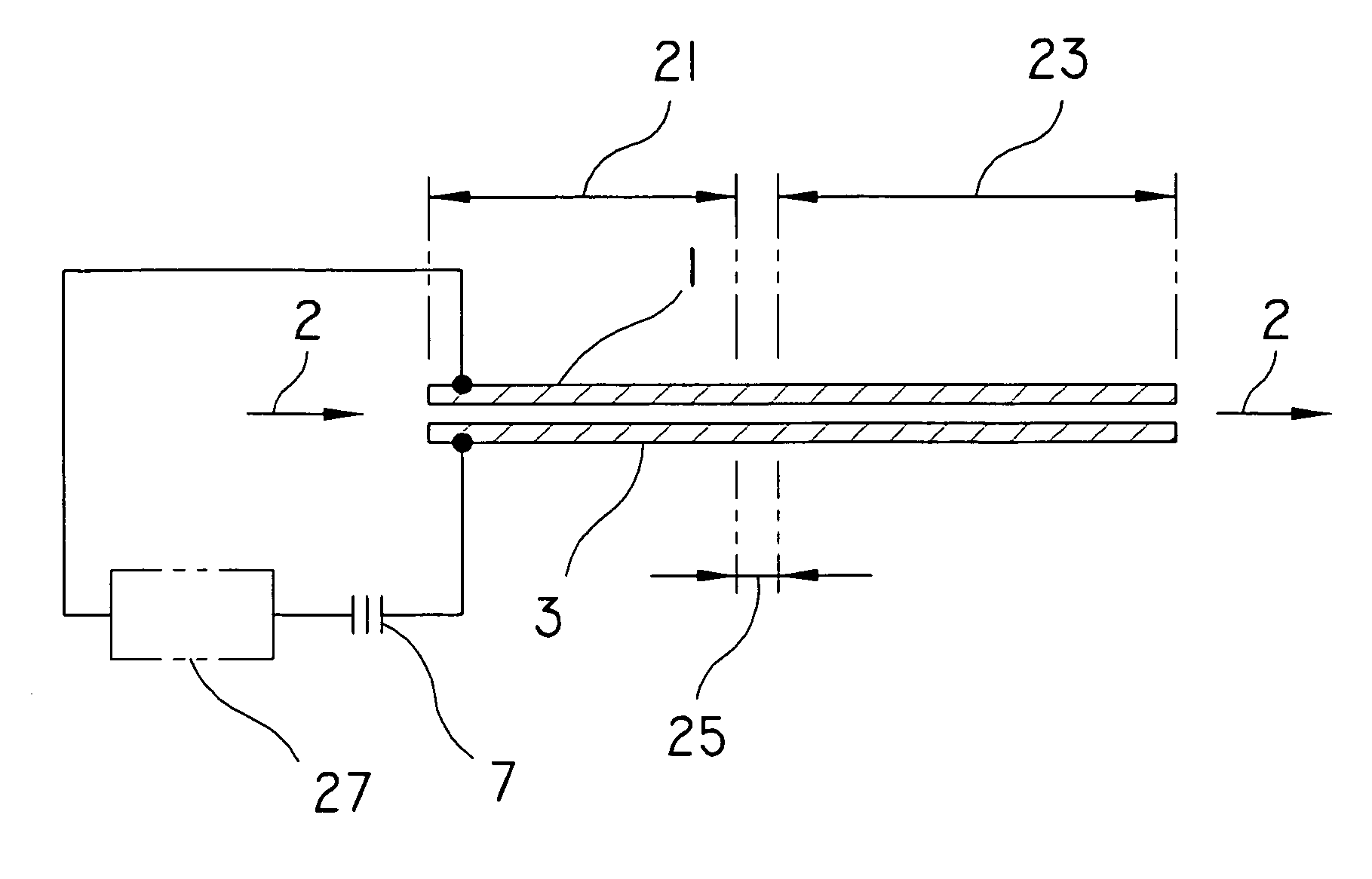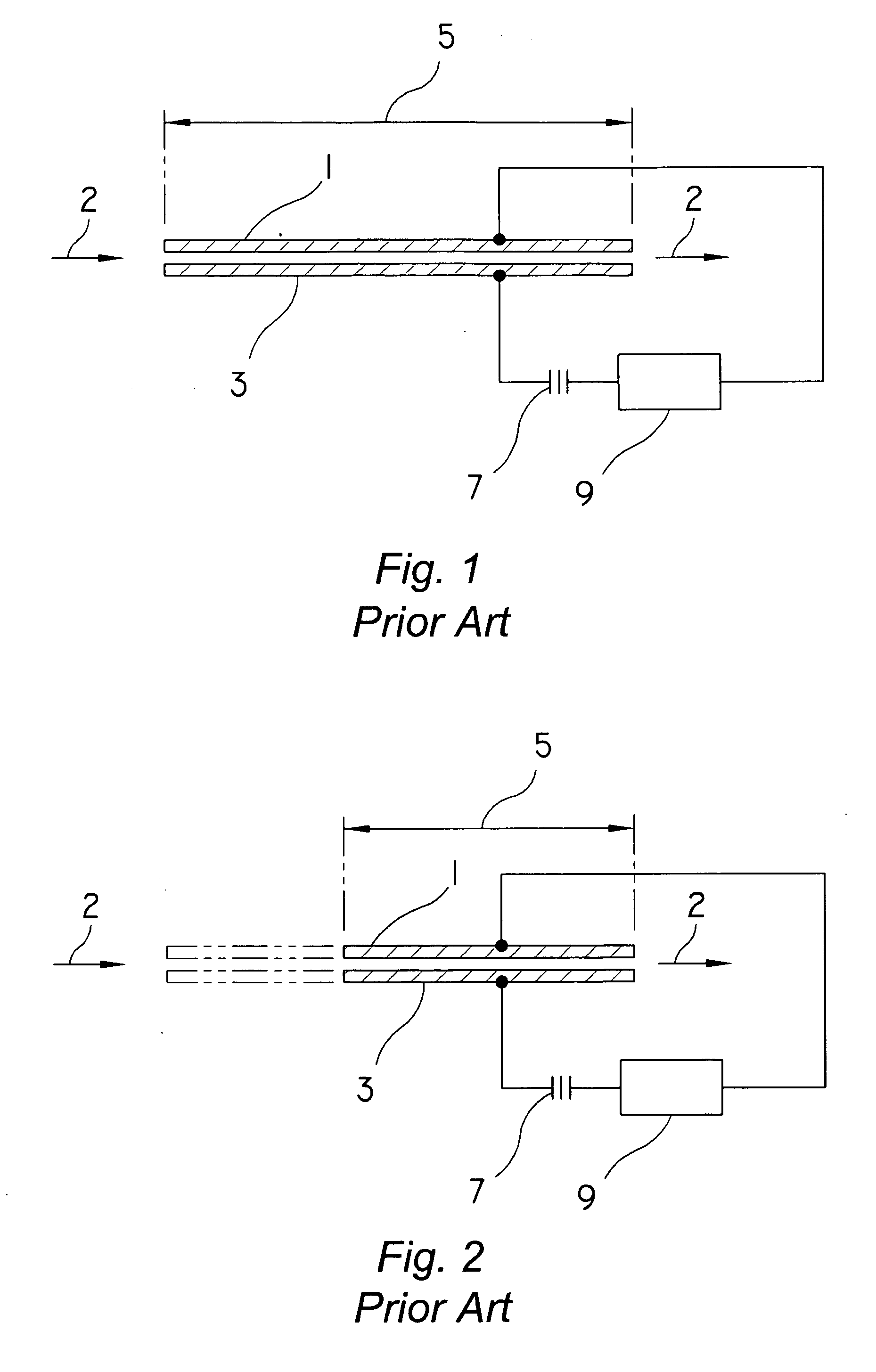Instant water heater with PTC plastic conductive electrodes
a technology of conductive electrodes and water heaters, which is applied in the direction of fluid heaters, lighting and heating apparatus, and immersion heating arrangements. it can solve the problems of short product life, dry fire burnout, and instant water heaters, and achieve the effect of lowering the outlet temperature of water
- Summary
- Abstract
- Description
- Claims
- Application Information
AI Technical Summary
Benefits of technology
Problems solved by technology
Method used
Image
Examples
Embodiment Construction
[0052] Although this invention contemplates a number of physical arrangements for effective heating and for regulation of electrical current so as not to induce undesirable harmonics that can over heat electrical wiring, the principal advantages of this invention are derived from the use of unique PTC electrodes which they all use.
[0053] A basic schematic of a prior art electrode water heater is shown in FIG. 1 (Prior Art). Water flows 2 between two electrodes 1,3 while power 7 is regulated by way of an electronic circuit 9 to provide a pre-selected water temperature based on a combination of the water's electrical conductivity and the area of the opposed faces 5 of said electrodes 1,3.
[0054] Should the water conductivity become extremely high, a solution shown in FIG. 2 (Prior Art) for stopping a overcurrent condition would be to shorten the electrodes thereby reducing the area of their said opposed faces 5 such that it would better match the available power to the water's conduc...
PUM
 Login to View More
Login to View More Abstract
Description
Claims
Application Information
 Login to View More
Login to View More - R&D
- Intellectual Property
- Life Sciences
- Materials
- Tech Scout
- Unparalleled Data Quality
- Higher Quality Content
- 60% Fewer Hallucinations
Browse by: Latest US Patents, China's latest patents, Technical Efficacy Thesaurus, Application Domain, Technology Topic, Popular Technical Reports.
© 2025 PatSnap. All rights reserved.Legal|Privacy policy|Modern Slavery Act Transparency Statement|Sitemap|About US| Contact US: help@patsnap.com



